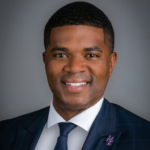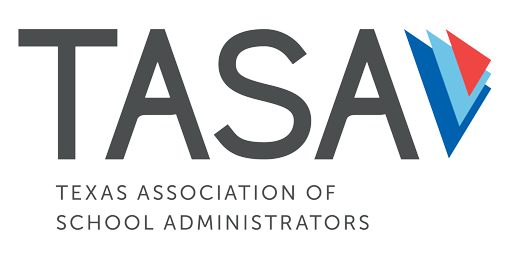by Dr. Darryl Henson Jr.
 This article originally appeared in the fall 2023 issue of TASA INSIGHT. Dr. Darryl J. Henson is the superintendent of Marlin ISD. Prior to coming to Marlin, Henson was assistant superintendent of school leadership in Cedar Hill ISD. He has also served as a teacher, instructional specialist, and principal at districts throughout Texas. Henson began his educational career as a fourth-grade teacher in Austin ISD, later serving as a middle and high school mathematics teacher, instructional specialist, and principal in Lockhart, Ysleta, and Houston ISDs. Henson graduated from The University of Texas at Austin with a Bachelor of Science in Elementary Education, The University of Texas at Arlington with a Master’s of Education in Educational Leadership and Policy Studies, and the University of Houston with a Doctorate of Education in Curriculum and Instruction.
This article originally appeared in the fall 2023 issue of TASA INSIGHT. Dr. Darryl J. Henson is the superintendent of Marlin ISD. Prior to coming to Marlin, Henson was assistant superintendent of school leadership in Cedar Hill ISD. He has also served as a teacher, instructional specialist, and principal at districts throughout Texas. Henson began his educational career as a fourth-grade teacher in Austin ISD, later serving as a middle and high school mathematics teacher, instructional specialist, and principal in Lockhart, Ysleta, and Houston ISDs. Henson graduated from The University of Texas at Austin with a Bachelor of Science in Elementary Education, The University of Texas at Arlington with a Master’s of Education in Educational Leadership and Policy Studies, and the University of Houston with a Doctorate of Education in Curriculum and Instruction.
Being a historically poorly rated school district is extremely discouraging for everyone involved. It has a negative impact on the students, the staff members, the families, and the entire community. It affects morale and motivation. It’s an incredibly difficult situation all around, especially for a district that serves historically marginalized student groups.
This was the situation in Marlin ISD when I joined as superintendent in 2020. The district, which serves 880 students in a small community just outside of Waco, had experienced unacceptable or failing ratings for more than a decade. It had lost its accreditation status, was under state supervision, and many parents elected to have their children bussed to other, higher rated schools.
When I came in, I said, “Enough is enough.” In order for this district, and these students, to have a chance, we knew had to change the narrative in big way — and change it we did by making some significant shifts surrounding culture, accountability, and retraining. In 2019 we were rated an “F” and we improved to a “B” in 2022, raising our academic rating 30 points in just three years.
Here are some of the strategies we used to achieve what ended up being an historic turnaround for this district, and one that continues to this day.
We Changed the Culture
My motto when I was hired was “Marlin is mine.” This is my district, and my responsibility. I wasn’t going to let us fail. My team and I knew that to improve student outcomes we would have to change the narrative. We needed to erase the idea that we were a “failing” district and create a culture of success and of winning. Here are some of the things we did:
- We made sure employees were more visible on campus so students would have daily positive interactions with them. This helped students feel motivated, cared for, and respected. If you show students you believe in them wholeheartedly, they will meet and even exceed your expectations.
- We held celebrations to reward students and teachers for their work. Recognizing hard work and celebrating accomplishments has a big impact. When students made academic gains, we celebrated. We brought in snow cone trucks and organized parades and other types of celebrations to reward students and staff for their accomplishments.
- We provided students with brand name clothing for their school uniforms. It may sound like a small thing, but kids care how they look. This helped instill a sense of pride and shows that little details can make a big difference.
We Focused on Data and Accountability
Back in 2020, the average Marlin ISD student was 2.5 years below grade level. To accelerate student learning, we had to assess where students were and figure out how to address their learning gaps. We did our research and ended up adopting an online assessment and instruction program called i-Ready for reading and math. It helped us to identify the specific skills students needed and also included lessons to support those skills. Because i-Ready is aligned with the Texas state standards, it was easy for teachers to see where their students were and track student growth during the year.
Teachers also started using “know and show” charts to help students meet their goals. For instance, if a student must know the Pythagorean theorem at the end of the year, this helped them determine what they needed to learn first to get to that point. Class periods were extended by 25 minutes to teach prerequisite skills for students who were behind and to help close those gaps.
Adopting specific tools and practices like these was an important aspect of improving students’ academic growth and has worked for some of our longest struggling learners.
We Changed How We Hire and How We Train
When I started to build my team, I hired people who didn’t just look good on paper. I picked people with whom I had personal experience and who I knew were going to be able to do the job.
I give this analogy: “If you want to get the work done on your house, are you going to bring in random people or are you going to bring in people you know and trust?” I would choose the latter. I needed to know that the people I was hiring could do the job. They say, “Don’t hire your friends,” but I hired my friends because I knew their hearts were for children. I subscribe to quality instruction and teaching children right. I want my team to care and to be able to teach. I made sure everyone understood why they were here and I held them to high standards for both how they support academics and in how they treat and communicate with students.
Along with shifting our hiring practices, we also revamped professional development. We had our staff go back to the basics — everything from how to have a lesson cycle to what to write on the board for learning objectives and closure activities. We focused on making sure all teachers understood the STAAR accountability system and how to show student growth. These shifts in professional development provided a solid foundation in which everyone understood what was required and helped them implement the changes needed to support student growth.
Four Leadership Tips
In addition to these strategies, the most important thing for a school or district leader to know to turn a school around is how to lead. It’s not for the faint of heart, but it is rewarding beyond measure. I encourage school and district leaders to keep these four things in mind.
- Be unapologetically yourself. If you don’t want to lead, don’t be a leader. If you’re going to be a leader, lead with conviction and stay true to yourself and your principles.
- Have a heart for children. That means doing what’s best for them, no matter what. Nothing we do in education is about ourselves. Hold students to high standards, but also treat them with grace and mercy.
- Have a will to win. If you win in education you are winning for children.
- Understand your influence. You’ll likely influence people in three different ways: 1) Through your position. People will do what you ask because you’re the superintendent. 2) Through your relationships with your staff members. If you treat them with love and respect, they will do the same. 3) Through being competent. No one wants to follow a leader who doesn’t know their craft. If Bill Gates started talking to us about computers, we’d all take notes, right? If people know that you know what you’re talking about, they will listen and respect what you have to say.
Students in Texas and nationwide deserve to have a high-quality education and opportunities to grow, learn, and reach their full potential. Leading a district turnaround is challenging, but the strategies above can help leaders set their staff members and their students up for success.
MORE LEADERSHIP PERSPECTIVESWanted: Your Leadership Perspective
If you’re an experienced school leader and TASA member with some leadership perspective to share, email Dacia Rivers with a short description of your proposed article, and we may publish it in a future issue of INSIGHT and/or on the TASA website.


